Degenesis: Justitian Review
TL;DR
As a game master the best present I could ever receive is a setting book that makes me feel that if I got on a horse and rode far enough, I could reach the places it describes. I could smell the dust in the air, hear the sounds of its people, and see the sights change as I moved through it. Give me a world in motion, with fascinating, engaging NPCs, architectural oddities, weird accidents of history, seething tensions, and unexpected alliances. Drop story hooks on every page – some I can riff off on the fly, some so big they could propel multi-session adventures. Lure me with enticing stories and evocative images. That’s what you get with Justitian, an epic two-volume 570-page sourcebook that drops you into the most powerful city in the Protectorate. It guides you through the surrounding cities, spills the secrets of key NPCs, and reveals long-hidden secrets from the Degenesis metaplot. And it’s available for free.
About Degenesis
Degenesis is a post-post-apocalyptic game produced by Sixmorevodka, a Berlin-based concept art studio. It’s very much a game built around setting immersion – civilization was wiped out five centuries ago by a spore-carrying meteor, and even as humanity has slowly and unevenly recovered, the spore hijacks biology, creating horrific creatures that see earth as their birthright. Some factions ignore the threat, others fight it tooth and nail. Nothing is black and white, and player characters must navigate a dangerous and complex environment, whether they’re making their way through the Stukov Desert or navigating the streets of Justitian.
A word about my relationship to Degenesis: I’m not a disinterested party. I am an active member of the official Degenesis Discord server and have been running a campaign for 46 sessions and counting. For more context you can read my initial Degenesis review and follow-up actual play review. I also recommend reading Gunsmile’s A New Player’s Guide to Degenesis and watching her Introduction to Degenesis video.
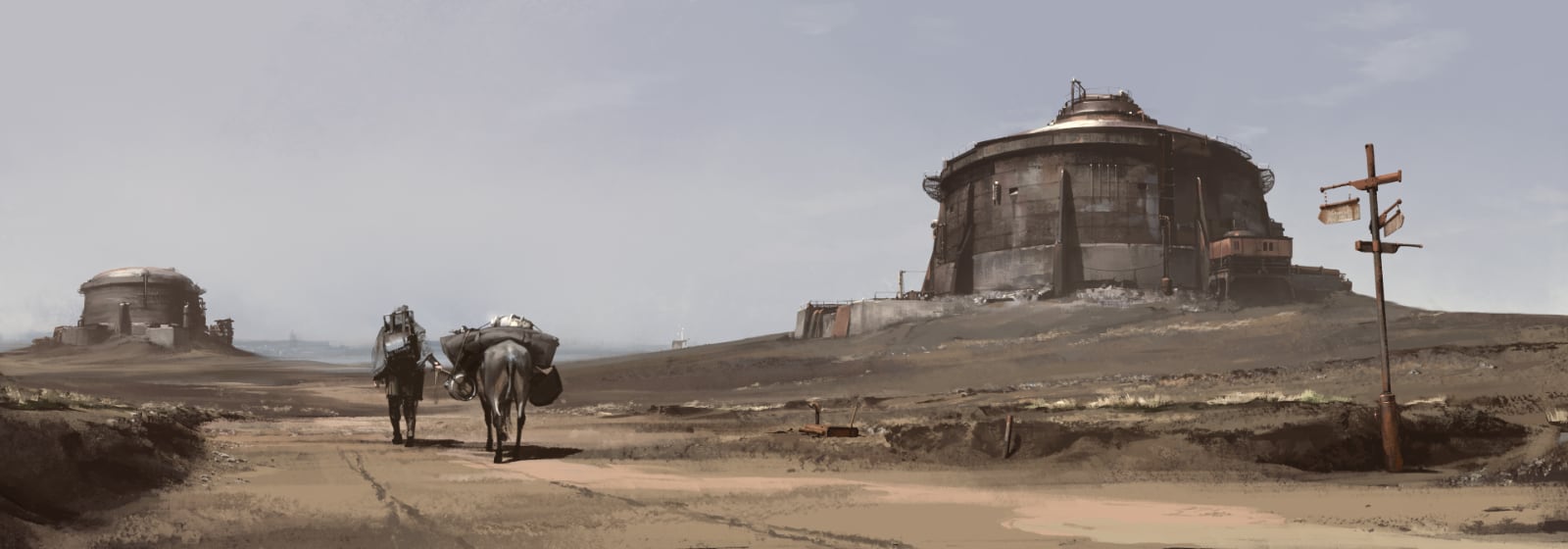
Civilization and Its Discontents
Note: Justitian explores the range of human behavior; as in other Degenesis supplements, occasionally you’ll find language and situations that are unquestionably adult in nature and may disturb you. The prologue to The Righteous Fist in particular is jarring. It is written from the perspective of a truly nasty antagonist. The writing makes the threat to Justitian clear, using language best described as obscene. I use the TV show Deadwood and the Crossed +100 comics as rough analogues – if you find either of them unpalatable, you may have problems with that section and a handful of other pages in Justitian.
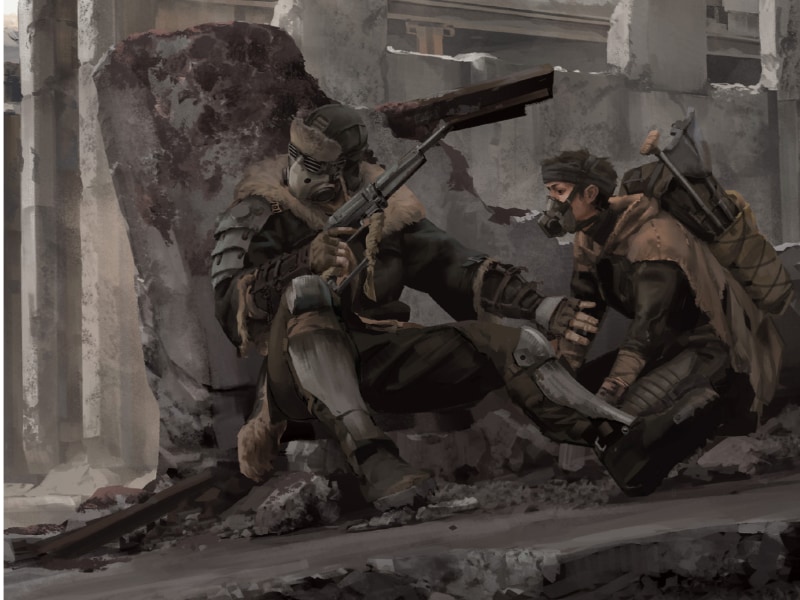
The Protectorate is huge swath of territory held together primarily by three Cults – Judges, Chroniclers, and Spitalians – working in concert to build a new civilization in the ruins of what was central Europe. But the security of civilization comes at a cost, in the form of the Iron Laws enforced by the Judges. And obtaining what is necessary to keep the huge city alive often means taking those necessities by force. The Clans surrounding the Protectorate nurture grievances. They grow restive.
Justitian isn’t a street-by-street, building-by-building view of a locale. Instead as a GM you get an overview of the economic, social, and political forces at play. Justitian provides history, broad contextual information, and deep dives into areas of specific interest. It’s also filled with stories – tidbits small and large – and earthshaking revelations. The why is as important in this book as the what. The answers to several major mysteries are revealed, and since this is Degenesis , that opens the door to further questions.
The three major Degenesis published adventures – In Thy Blood, The Killing Game, and Black Atlantic – are half setting supplement and half adventure module. Justitian is different. This is a pure setting supplement with no predefined adventures. There are no street-level or building maps. The books are like fields full of seeds. Which rows get watered is up to you as the GM. Whether this approach is a feature or a bug depends on your approach to game mastering, but it’s important to understand that this is not a book of ready-to-play adventures. This combination of setting, NPCs, and hooks is a perfect match for my GMing style, but your mileage may vary. Justitian delivers on the strengths of Degenesis: robust setting, memorable NPCs, a world in motion, and metaplot a GM can engage with or ignore at their discretion.
Justitian consists of two books: The Righteous Fist and Moloch. The first describes Justitian and the region around it. The second describes over a hundred NPCs. Both illuminate many previously untold metaplot secrets.
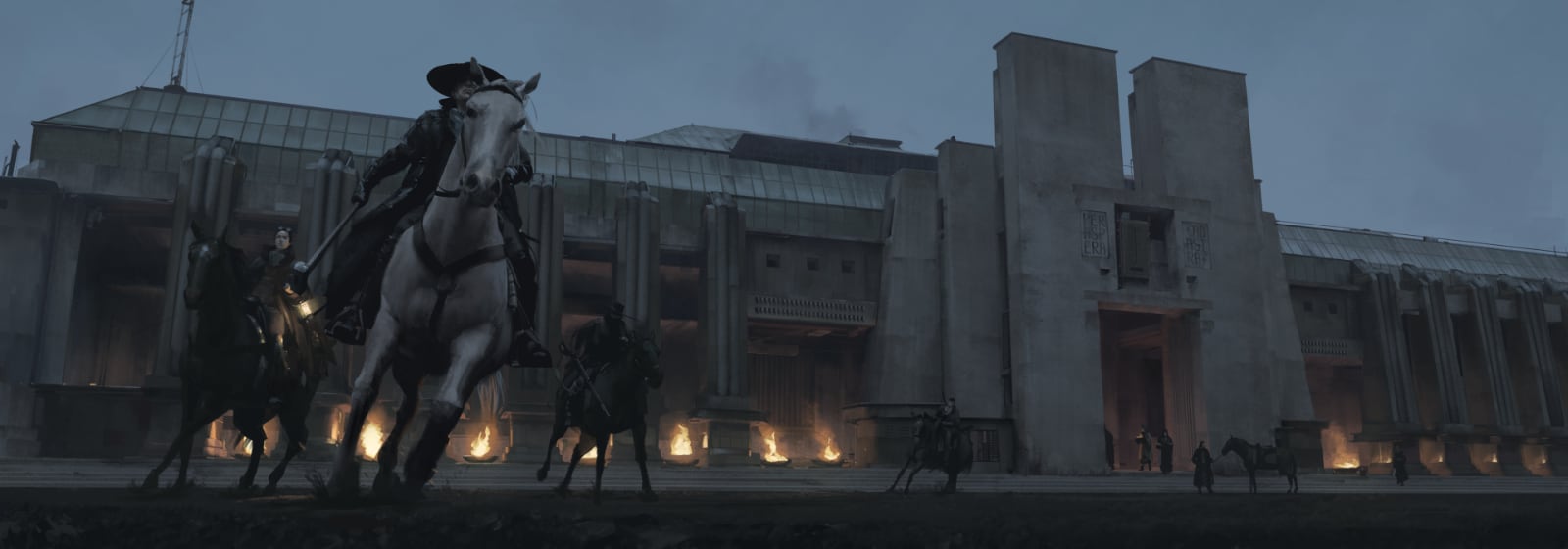
The Righteous Fist
The Protectorate covers a lot of geography, and there are several major areas of interest other than Justitian. Any one of them could serve as the core of a campaign. Besides Justitian itself, over 60 pages are devoted to the cities of Bassham, Mobilis, Liqua, Cavernis, Ferropol, and Siege, as well as The Spital and several smaller locales. Combined with a ten-page historical timeline of the Protectorate and several pages of information about areas bordering the Protectorate, this provides expansive context for the big city of Justitian, explaining how it became such a powerhouse and how it is connected to the rest of the world culturally, economically, and politically.
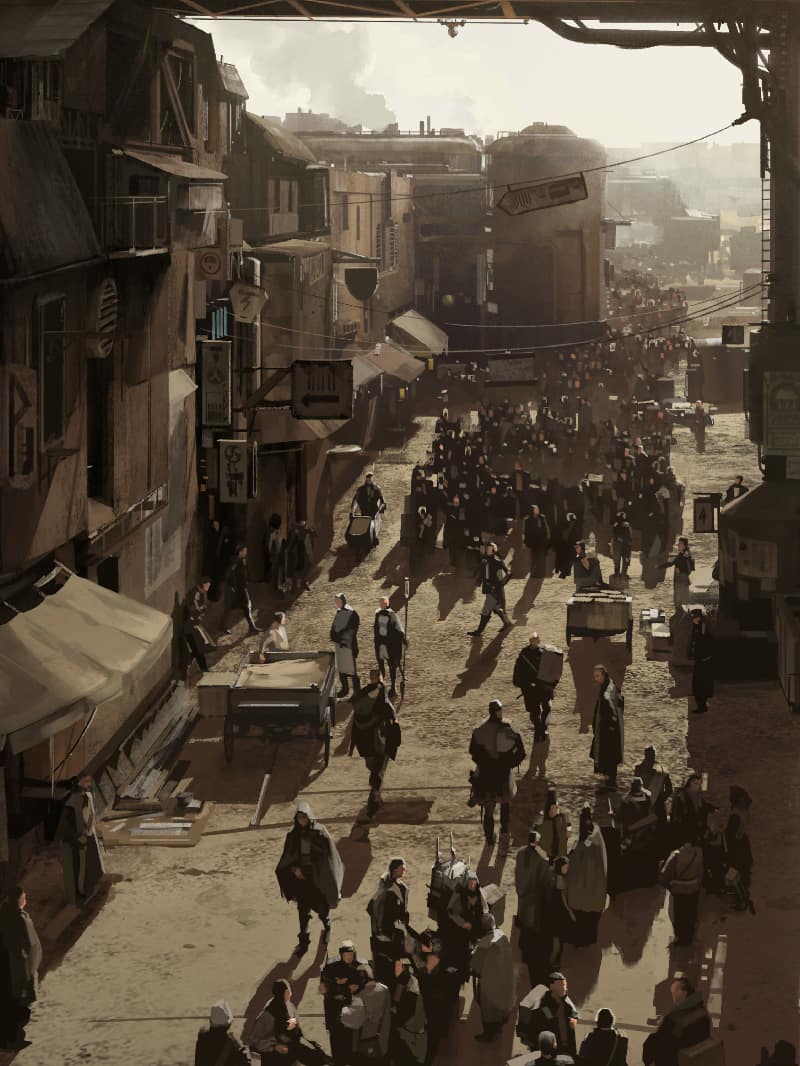
Justitan itself is massive. It envelops roughly 100 square kilometers and is home to up to a million people during the crowded winter months. Because the city is also the seat of economic and political power in the Protectorate, it’s fitting that the bulk of The Righteous Fist is devoted to describing Justitian.
The city’s festivals, weather, history, politics, and laws are covered, as are its economic underpinnings – all the way down to how the Spital keeps farm seed free of Spore infestation and how paper is produced in the city. This material could have been rendered bloodless and boring, but here it is presented with engaging panache. Several pages, for example, are adorned with agitprop art – visual reminders of the price the Protectorate’s citizens pay for security.
Like any large city, Justitian is divided into zones based on cultural affinities, politics, and economic stratification. Justitian is also segmented along other lines. The Judges and Chroniclers manage Justitian with help from the Spitalians. But they are not the only powers in the city – the Anabaptists and Jehammedans each have their own zone, and there are areas heavily influenced by Apocalyptics and the very powerful Cartel. Population, economic activity, political leanings, and geography are described for each, along with deep dives into specific locales and activities that provide even more flavor.
The city is full of subterfuge and secrets. There are rifts within and between the ruling Cults. There are are those who literally live above the rest of the city and those who live below it. And there are those who navigate the seams between these realms.
In addition to all of that, there are little morsels, little slices of life that function like the cherry on top of an ice cream sundae. Who keeps Justitian from burning down? What do the Public Wells provide beyond water? How can you play chess while boxing? The answers to these questions are examples of how The Righteous Fist pushes verisimilitude to eleven.
Moloch
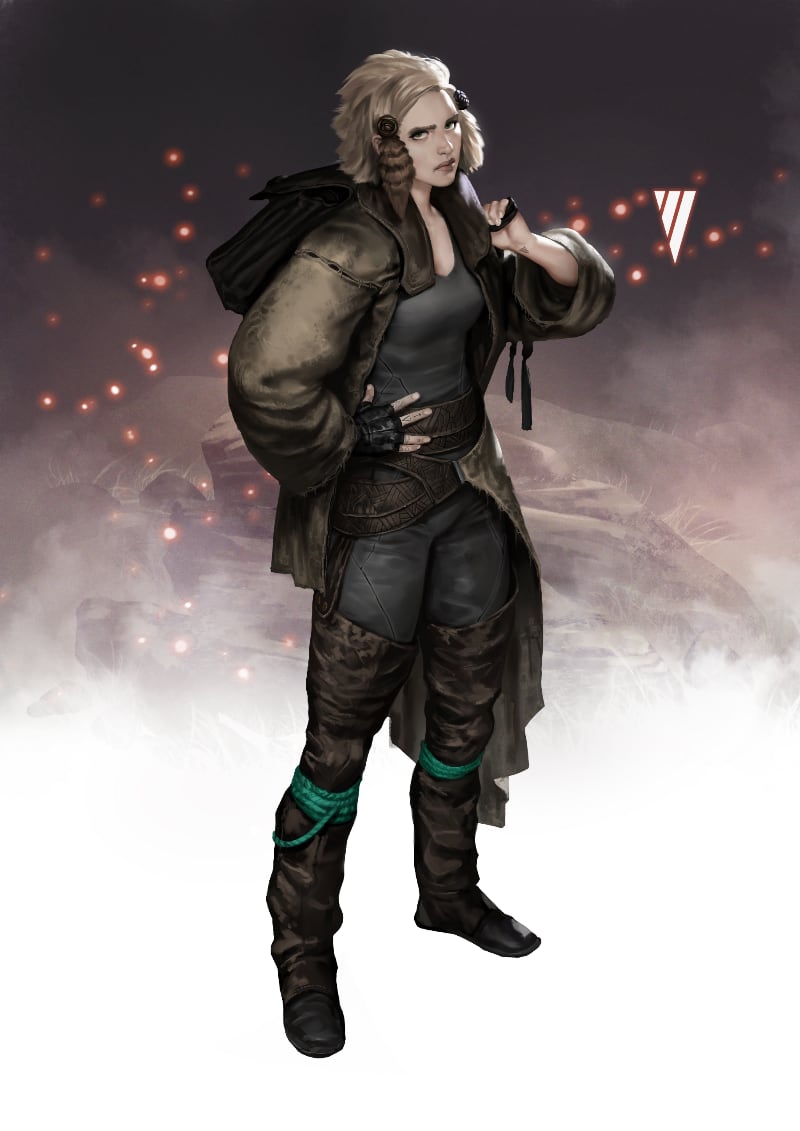
This is a book of NPCs – 112 of them – described in depth, with motivations, secrets, and relationships to events and other NPCs that affect Justitian, the Protectorate, and in some cases the broader world of Degenesis. Each of the NPCs is illustrated, and each provides multiple hooks for a creative GM to exploit.
As with The Righteous Fist, Moloch reveals metaplot secrets, some quite explosive. Putting these pieces together and joining them to discoveries from the other books, is half the fun of reading Moloch.
But this is also a practical book. The city is the backdrop; its inhabitants are what keeps it in motion. These NPCs represent some of the most powerful characters in Degenesis, some that are just normal people enmeshed in dangerous situations, and some that are full of deceit and malice.
There’s at least one NPC for each Cult, and at least a dozen for each of Justitian’s Big Three: the Judges, Chroniclers, and Spitalians. There are also over a dozen Clanner NPCs and a handful of truly unique characters who should be introduced with caution.
Every one of these NPCs are worth a careful read, as many of them have stories that intersect – sometimes in obvious ways, sometimes not so obvious. The individual NPC stories provide ideas for GMs, but some of the most intriguing hooks come from examining these relationships between NPCs.
Beautiful Details
As you’d expect from a Degenesis book, the layout and art in Justitian is utterly sumptuous. From sweeping overviews of the city to scenes of life in each of the city’s districts, to the full-page color portraits for each of the NPCs in Moloch, it’s a tour de force of visual artistry. Everything is taken into account, from how the streets intersect to the architectural variations from one district to another, to the variations in clothing by social status, vocation, and district. Reading through the books I find myself returning to many of the images multiple times to soak in all the details and mine them for story ideas.
Maps of The Protectorate, Bassham, Liqua, Mobilis, Cavernis, Ferropol, Siege, The Spital, Justitian, Justitian’s Underground, and a political map of Justitian can all be found at Degenesis.com. They follow the unique styling established in earlier Degenesis releases, and looking through them is like sifting through a treasure chest. For any of the cities in the Protectorate, with the information provided in The Righteous Fist and the corresponding overview map, as a GM you have a foundation that can be built out in as much or as little detail as you desire.
Using Justitian in Your Campaign
Take your time. Seriously. This applies to Degenesis broadly, and to Justitian in particular – you’ll get dozens of ideas as you read through the books, and may be tempted to leap at the first that take your fancy. Resist the urge. Read the books all the way through, taking notes along the way. Degenesis is not a game built for easy pick up and play, and Justitian is not a ready-to-play supplement. Don’t rush through it; let it marinade in your brain first.
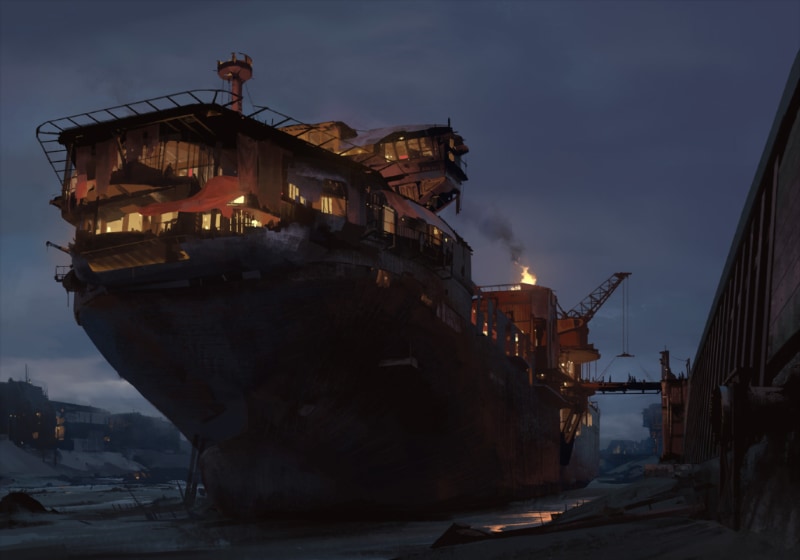
If you’re already running a campaign, it’s easy to put reasons in front of player characters to go there. Justitian is the seat of power for the Chroniclers and Judges. There’s no better place in the word for Scrappers to buy and sell. Jehammedans have found a precarious foothold in Justitian. The nearby Spital is home base for the Spitalians. If you’re an Apocalyptic looking to make a big score, what better destination than the sprawling metropolis of Justitian? Neolybians and their Scourger protectors have reasons to journey to the center of European wealth and trade. Anyone looking to be at the center of political and economic power in Europe can find reasons to be in Justitian.
You can also use NPCs and their stories to draw player characters into Justitian. For example, the Cartel’s reach extends beyond even the Protectorate. Some of the characters in Moloch made their way to Justitian from other locales, perhaps providing a reason for the PCs to go there as well.
Depending on Cult composition, the Protectorate can also serve as an excellent starting point for a campaign, especially for a single-Cult PC group. If you’re thinking of taking this approach, be sure to review the Cult Collectives section in the Artifacts supplement.
Finally, even if you never bring the player characters to Justitian, it’s a valuable suppliment if any of them is a Judge, Chronicler, or Spitalian. The Protectorate is home base for all three of these Cults, and these books provide heaps of information about each.
A Nit to Pick
As with other Degenesis books, Justitian’s table of context is very high level. This is in keeping with a philosophy of game book as literary work, which I understand, particularly when you’re reading through it the first time. I’d still like a more granular table of context. While CMD-F is your friend with any PDF, there are times when it’s still not sufficient for quickly finding information in books as dense with information as these.
Getting to Justitian
I’m basing this writeup on a full read-through of the pre-release Justitian PDFs provided by Sixmorevodka. You can download them for free at Degenesis.com, and you can order them in print. According to SMV, the pre-release PDFs represent 95% of what will appear in the final versions. When the final versions are ready, updated PDFs will be released and the print books will be produced and shipped.
Ω
2021-01-26 Update
The final PDF version was released on 2021-01-25. Each of the two books is 304 pages, and now contain detailed information about the Clans surrounding Justitian as well as significant metaplot revelations.
2021-03-29: I recently started a blog devoted purely to Degenesis. Check it out: Train to Baikonur.